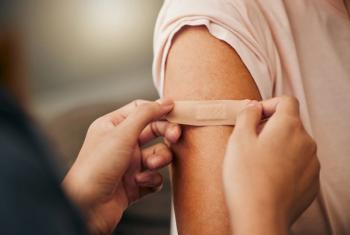
Keeping epinephrine on hand at school saves lives
Schools that stock epinephrine for emergency use to treat anaphylaxis caused by food reactions or other triggers can see striking benefits, a new study shows.
Schools that stock
The study, presented at the
A total of 35 students and 3 adults were treated for reactions: 76.3% by a school nurse; 18.4% by another staff member; and 5.3% by the patient. Most reactions occurred in elementary schools; 37% occurred in high schools.
The researchers were surprised to find that more than half the reactions were first-time emergencies, perhaps because children are encountering some foods for the first time at school. An estimated 25% of children who have received
To get weekly clinical advice for today's pediatrician,
Newsletter
Access practical, evidence-based guidance to support better care for our youngest patients. Join our email list for the latest clinical updates.










